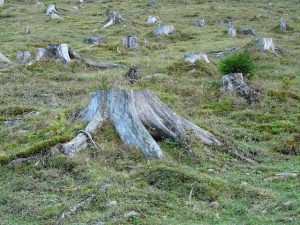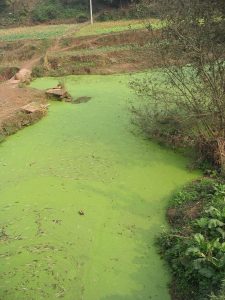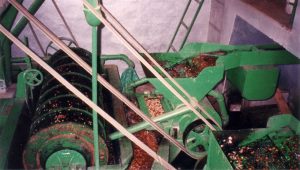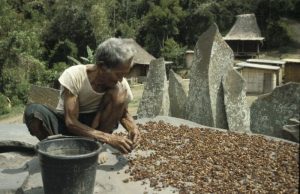Coffee Day 2015: Coffee, the Environment, and Sustainability
 This week, we celebrate coffee. Tuesday, September 29, is National Coffee Day, a beloved American holiday where coffee powerhouses such as Dunkin’ Donuts, Krispy Kreme, Peet’s, Starbucks, and Wawa offer freebies and discounts. As an added coffee bonus this year, the International Coffee Organisation (ICO) has designated October 1 as the first annual International Coffee Day. This special day will celebrate all things coffee and will be launched in Milan, Italy as part of the city’s 2015 World Fair.
This week, we celebrate coffee. Tuesday, September 29, is National Coffee Day, a beloved American holiday where coffee powerhouses such as Dunkin’ Donuts, Krispy Kreme, Peet’s, Starbucks, and Wawa offer freebies and discounts. As an added coffee bonus this year, the International Coffee Organisation (ICO) has designated October 1 as the first annual International Coffee Day. This special day will celebrate all things coffee and will be launched in Milan, Italy as part of the city’s 2015 World Fair.
Global Coffee Consumption
After only crude oil, coffee is the most sought commodity in the world, and is worth over $100 billion globally. Sugar, corn, natural gas, and even gold all take a back seat to coffee. The global population drinks over 500 billion cups of coffee every year and more than half of all Americans over the age of 18 drink coffee every single day. Coffee farms, 67% of which are in the Americas and 90% of which are in developing countries, provide the economic livelihood for over 25 million people. And while developing nations grow and produce the world’s coffee, industrialized nations drink it. After water, coffee is actually the most consumed beverage in the world. Finland drinks the most coffee per capita in the world, and America consumes the most coffee overall. Brazil, the top coffee producing nation in the world, ranks a distant 13th per capita consumer.
Environmental Impact
 As demand has increased, coffee producing countries have been responsible for a significant amount of global deforestation and watershed damage. Coffee was historically a shade-grown crop, intolerant of direct sunlight. Shade trees provide a habitat for birds that provide natural insect control, and they also enhance soil and encourage water retention in the soil, resulting in shade-grown coffee requiring little to no pesticides or fertilizers.
As demand has increased, coffee producing countries have been responsible for a significant amount of global deforestation and watershed damage. Coffee was historically a shade-grown crop, intolerant of direct sunlight. Shade trees provide a habitat for birds that provide natural insect control, and they also enhance soil and encourage water retention in the soil, resulting in shade-grown coffee requiring little to no pesticides or fertilizers.
Unfortunately, only 24% of today’s coffee is actually shade-grown. Newer techniques that call for clear-cutting forests and applying chemicals have been found to greatly increase yields — but at great environmental and health cost. 60% of the six million acres of coffee lands have been completely stripped of shade trees since 1972, and coffee is now the third most pesticide-laden crop in the world, behind only tobacco and cotton. Bird populations have decreased by 20% in the last ten years alone, and soil erosion and depletion resulted in producers searching for new land on which to plant their coffee crops, and further deforestation, particularly of rainforests. Rainforests act as the world’s thermostat by regulating temperatures and weather patterns and are also critical in maintaining Earth’s finite supply of fresh water. Now understood to be unsustainable, this “new” method of growing coffee also damages watersheds and affects the health and livelihood of local populations.

Because the land is clear-cut and coffee is typically grown in highlands, soil erosion and agrochemical runoff are major problems in coffee production. The excessive amount of pesticides and fertilizers needed to grow conventional coffee runs unhindered and unfiltered into lakes and streams downhill from the coffee shrubs. Very often, these lakes and streams are the main water supply for the local community. More and more frequently, water supplies in coffee-growing nations are becoming severely contaminated due to runoff from fertilizer, which adds nitrogen to the depleted soil, and, in turn, the local water. And since nitrogen is a vital nutrient for plants and encourages plant growth, it also encourages the growth of algae in bodies of water. Excessive algae in water bodies, called “blooms”, makes the water unfit for consumption and causes foul odors and tastes. When the algae finally dies and starts to decompose, it removes all oxygen from the water, causing ammonias to form, and results in the widespread die-off of fish and other aquatic organisms. Groundwater beneath coffee farms can also become contaminated with excess nitrogen, causing a health threat to humans.
Pesticide usage in coffee growing also contaminates water supplies. Whether entering the water supply through aerial spraying or from soil erosion and runoff, pesticides are known to be toxic to human and aquatic health. Many of the pesticides used in coffee growing nations have long been banned in the United States, and are known to bio-accumulate, disrupt hormones, and cause cancer.

And that’s just the growing. Add coffee harvesting and processing, and the outlook is grim. Conventional coffee is strip harvested, meaning all berries, ripe or not, are stripped off the vine, and sorted and depulped using a wet mill. Water-intensive mills, or wet mills, use water to sort and strip the beans of their mucilage, or protective coating. The beans are then allowed to ferment before they are washed, again utilizing an exorbitant amount of water, to ensure that all of the mucilage has been removed. Even small coffee mills utilize millions of gallons of water over a season, oftentimes depleting local water supplies and causing die-off of aquatic organisms. In addition, the wastewater produced by these wet mills contains nitrates, carbohydrates, proteins, fibers, fat, and many other substances, and these substances end up contaminating the local water supply. In fact, coffee wastewater is one of the largest contributors to water supply contamination in coffee-growing communities. Bacteria that break down the sugars and pectins in coffee wastewater require excessive oxygen, resulting in the same oxygen depletion and subsequent die-off caused by excessive nitrogen as described above. Many times, streams or other bodies of water contaminated in this way are effectively killed, requiring significant treatment that costs more than most of these communities can afford.
Sustainability

Because of growing knowledge and concern over the detrimental environmental effects of coffee production, solutions have been increasing. Dry mills are one example. Dry mills utilize mechanical demucilagers, do not require fermentation or washing processes at all, and use less than three gallons of water per pound of dry coffee. For wet mills, a solution lies in wetland engineering. For example, TechnoServe and Mother Parkers Tea & Coffee have joined forces to install Vetiver grass wetlands at wet mills. These wetlands, which are a low-cost but sustainable wastewater treatment option, contain deep-rooted Vetiver grass that drinks in wastewater and slows infiltration. Any remaining effluent enters a small pond at the bottom of the wetland where it evaporates.

But there are still plenty of conventional coffee producers, simply because conventional coffee processes are cheaper. Therefore, some forward-thinking companies have taken it upon themselves to require better practices. Mega-coffee chain Starbucks, the third largest restaurant chain in the world, implemented one of the industry’s first sets of sustainability standards, called Coffee and Farmer Equity (C.A.F.E.) Practices. Verified by third-party experts, this set of standards is more stringent than even Organic Certification or Fair Trade Certification, and focuses on both environmentalism as well as social responsibility. Peet’s Coffee & Tea works with certification organizations such as Rainforest Alliance Certification and UTZ Certified — which is on par with Starbucks C.A.F.E. practices — to ensure that every bean they purchase is fair trade as well as sustainably grown. But the San Francisco Bay-based company takes it one step further: they roast all their beans in the nation’s first LEED Gold certified coffee roasting plant, opened in 2007. Other coffee certifications include 4C Certification and Smithsonian Migratory Bird Center’s Bird-Friendly Certification.
Conclusion
 Coffee is a beloved beverage, enjoyed worldwide throughout different cultures, but it has come under scrutiny for its negative environmental and humanitarian impact in recent years. There are ways to reduce and even remove the detrimental effects associated with coffee production, and some forward-thinking coffee companies have implemented buying standards in an effort to improve both our environment as well as the livelihood of coffee farmers, while many other small coffee companies sell only fair trade or organic coffees. This week, as we celebrate both National Coffee Day on Tuesday, September 29, and the first annual International Coffee Day on Thursday, October 1, we can choose to support coffee companies who grow responsibly, which means helping to protect our world’s most precious resource — water. Now that’s something to celebrate. Happy Coffee Week!
Coffee is a beloved beverage, enjoyed worldwide throughout different cultures, but it has come under scrutiny for its negative environmental and humanitarian impact in recent years. There are ways to reduce and even remove the detrimental effects associated with coffee production, and some forward-thinking coffee companies have implemented buying standards in an effort to improve both our environment as well as the livelihood of coffee farmers, while many other small coffee companies sell only fair trade or organic coffees. This week, as we celebrate both National Coffee Day on Tuesday, September 29, and the first annual International Coffee Day on Thursday, October 1, we can choose to support coffee companies who grow responsibly, which means helping to protect our world’s most precious resource — water. Now that’s something to celebrate. Happy Coffee Week!
